Nanoparticle generation via spark discharger
i. Silver nanoparticle : antimicrobial agent.

ii. Nanoparticle coating for anti-microbial air filter
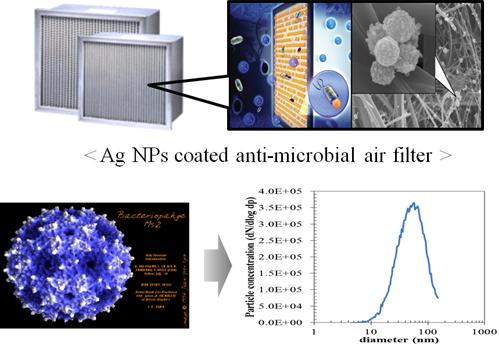
- The Leviviridae family (linear (+)ssRNA, encodes four genes)
- Host bacterium: Escherichia coli C3000
- Diameter: 275 Å (27.5nm)
- Safe for handling, similar in physical and resistance characteristics as human pathogenic viruses
- Plaque Forming Unit (PFU) analysis
Electrohydrodynamic (EHD) Technology
i. Electrospinning

- Electrospinningis a novel process of producing fibers that consist of good physical properties.
- Electrospinningis a method for obtaining nanofiber (100nm to 800nm), and a jet is ejected from a charged polymer solution when the applied electric field strength overcomes the surface tension of the solution.
- The ejected jet then travels rapidly to the target collector located at some distance from the charged polymer solution under the influence of the electric field and becomes a solid polymer filament as the jet dries. This electrospinning process is used to get nano fibrous web which is high filtration efficiency.
ii. EHD jet printing
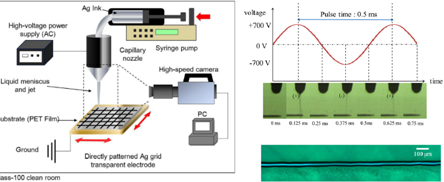
- Electrohydrodynamic (EHD) jet printing has beenproposed as viable non-contact printing technique.
- EHD jet printing is a method for obtaining fine patterns with diameters ranging from nanometres to micrometers, which uses a fine jet generated at the apex of liquid meniscus in electrospray.
- Generally, the diameter of the jet is much smaller than the nozzle diameter. Therefore, the EHD jet printing enables to obtain highresolutionpatterns without miniaturizing the nozzle.
Aerosol agglomeration
- Objective :to increase particle size of fine/ultrafine particles for high efficiency electrostatic precipitation or filtration.
- Particle grows by colliding each other (agglomeration).
- To increase the number of particle collision, disturbance was applied to particle path (AC electric field, ultrasonic wave).
i. Electrical agglomeration
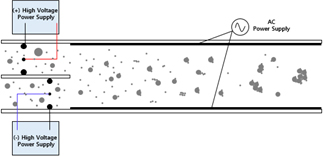
- Bipolar charged particles were exposed to AC electric field to increase probability of collision between particles.
ii. Acoustic agglomeration
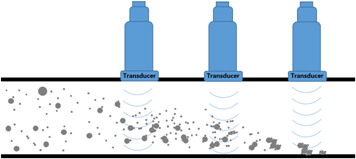
- Ultrasonic waves were applied to particle path to increase probability of collisionbetween
iii. Experimental result
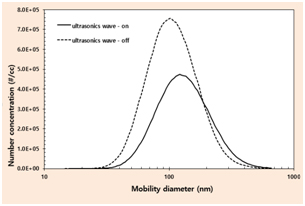
- Particle concentration decreased, and the particle size increased.
→ Particle was agglomerated.
